Reputation in the digital era is subject to the quickest of changes. One misstep, accidental or otherwise, can have your brand facing a new scandal. In light of this, brand safety is an imminent concern for every business on the digital scene.
Research indicates that more than 69% of consumers feel that the amount of inappropriate content online has increased in the past year. As a result, consumers are more vigilant than ever about shopping consciously. Moreover, 72% of consumers believe that brands should be held accountable for the content of their ads. Thus, if your brand’s ads appear to your target audience in some objectionable context, you may hurt their perception of your business, leading to a drop in trust and favorability.
So, how do you protect your brand’s reputation? With the right vision, strategy, and some collaboration, of course. In this blog, we will highlight brand safety risks and challenges and explain how implementing brand safety measures can help. Let’s get started!
What is Brand Safety?
“Brand safety” guidelines are a collection of best practices intended to shield the online perception and reputation of businesses from the adverse effects of dubious or inappropriate content when they advertise online.
For instance, if your ad appears next to some inappropriate content such as a post containing violence or nudity, the target audience may interpret the ad placement as endorsing the content itself. Thus, before placing ads on social media platforms, here are some pointers you must ensure —
- Are your advertisements running alongside content that could harm your reputation?
- Is your brand name mentioned in objectionable user-generated content?
- Is the narrative behind your brand or the images you have created being used without permission?
- Are there internet discussions centred on your brand that might not be good for your reputation?
Furthermore, as the social advertising landscape evolves, businesses are realizing that more than just preventing reputational risks, they can proactively associate their business with positive placements that reinforce their existing perception in the market.
Importance of Brand Safety on Social Media
Your brand’s reputation may be an intangible asset; however, it is the cornerstone of consumer trust. Misplaced content can not only damage the perception of your brand towards customers but also waste your advertising budget or have legal consequences.
Businesses that proactively manage brand safety risks automatically appear to be socially responsible and, thereby, gain a competitive advantage amongst not just customers but also partners, suppliers, and other collaborators. Investing time to maximize brand safety can, thus, help you get the most out of your digital marketing dollars, regardless of the size of your business.
Risks and Challenges Brands Face on Social Media
Here are some common brand safety risks faced by businesses advertising on social media:
Advertising Alongside Inappropriate Content
Performance marketers love programmatic advertising since it allows them to purchase ad placements through distribution networks at a lower cost. However, it also means that marketers aren't completely in charge of where their ads run.
This could result in your social media advertisements being displayed next to offensive or inappropriate content, such as fake news and misinformation, hate speech, controversial topics like climate change, etc.
Here are a couple of examples of misplaced ad content that posed brand safety risks:
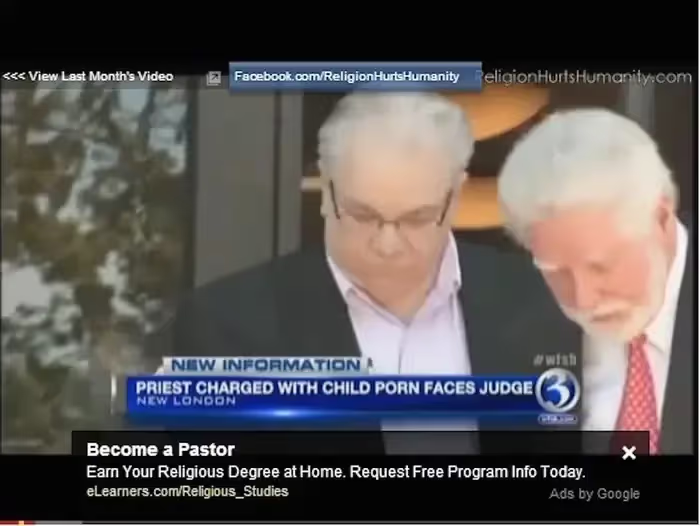
Example 1: An ad for pastor training appears under this video where a priest is being charged with possession of child porn.

Example 2: An ad placement went wrong on Facebook. A sponsored post for the music video for the iconic song "Stacy's Mom," which is about a teen falling in love with their girlfriend's mother, appeared next to a real-life example.
Using a Hashtag Associated with Risky Content
Hashtags can significantly increase reach and engagement when launching a new campaign or content series. However, you must first conduct thorough research. Otherwise, your brand's posts may turn up in a search that contains offensive content.
One great example is how Kenneth Cole misappropriated the hashtag #Cairo to sell the shoes from his Spring Collection in 2011, during the Egyptian Revolution. Twitter immediately tore into the brand for its insensitivity, and the fashion mogul had to delete his tweet and post an apology.

Endorsing the Wrong Influencers
Collaborating with internet creators and influencers can typically elevate a brand's exposure. However, these opportunities come with great risks.
Influencers often encounter scandal because of expressing their personal beliefs and points of view on their social media channels. These views might not coincide with those of former or current brands they partner with. With the rampancy of cancel culture in the present-day online landscape, endorsing the wrong influencers can prove disastrous for your brand.
One great example of this is how Chrissy Teigen’s influencer partnership affected brands like Target when accusations about her bullying other smaller internet personalities, like Courtney Stodden, came to the forefront in 2021. In response to the controversy, Target swiftly announced that it would no longer offer the star's Cravings collection in its retail locations.
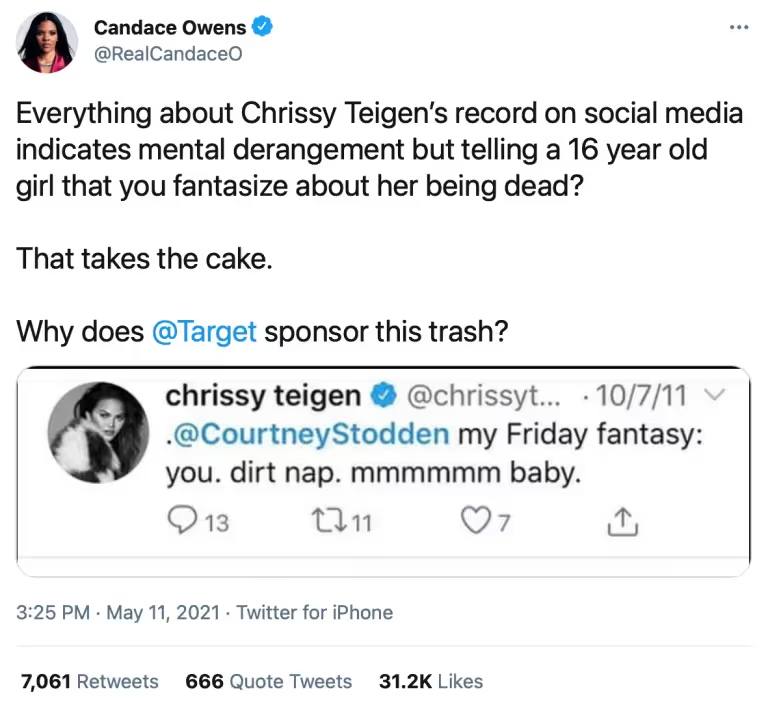
Placing Ads on Websites Attracting Fraud Clicks
Programmatic advertising also risks drawing unwanted traffic if placements are not carefully considered. For instance, your brand's ads displayed on websites with bot-generated traffic may result in inflated metrics and wasted advertising budget without reaching real human users.
This, in turn, can lead to your conversion rates suffering from irrelevant traffic. Not to mention, it may detract from your rating in search results. Furthermore, wrong ad placement can also waste precious advertising dollars and cause PR scandals for your business.
User-Generated Content Fails
User-generated content (UGC) too can be a brand safety risk when it contains inappropriate, or offensive material, such as controversial opinions or violent or criminal actions. Here are a couple of examples of UGC content fails that posed brand safety risks:
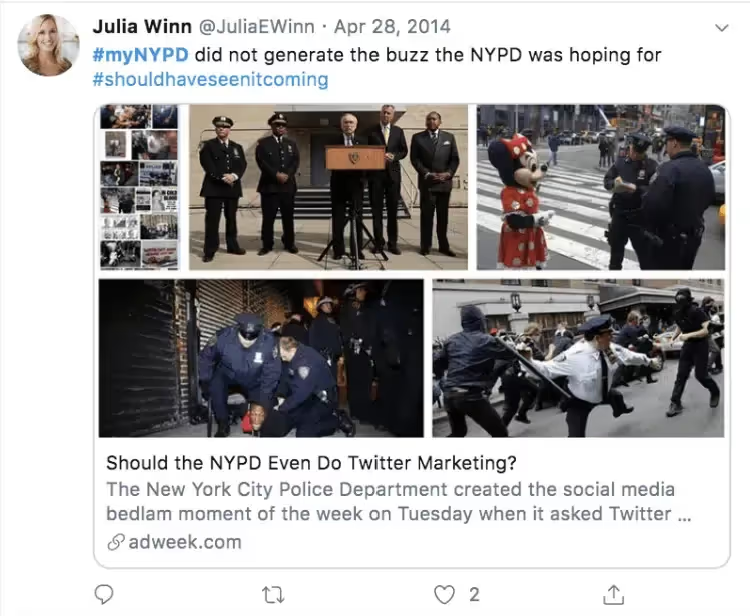
Example 1: When the official Twitter profile of NYPD invited New York’s citizens to share their best experiences with the police department right after an unarmed 18-year-old black man was shot by a white officer, it backfired terribly. The post quickly became an outlet for complaints of police brutality, abuse, and racial profiling. The key takeaway here is that forcing love and trying to make a quick fix in a situation where you have lost massive trust doesn’t work.

Example 2: When McDonald’s started a campaign called #McDStories to inspire customers to share heartfelt stories about Happy Meals, people began sharing their bad McDonald's experiences, from poor service to their fast food experience and more. The campaign went viral to such an extent that McDonald’s ultimately cancelled it. The key takeaway here is that McDonald’s should have been better prepared by identifying potential failures before launching this UGC campaign and paying Twitter to make the hashtag trend across the platform.
Implementing Brand Safety Measures and Best Practices
Here are some brand safety measures and best practices you may implement to prevent offensive or improper information from becoming associated with your brand:
Familiarize Yourself with Brand Safety Guidelines of the Relevant Social Media Platforms
It is important to understand the unique features, ad formats, targeting configurations, and brand safety controls of each social media platform you use. Below is a brief overview of the brand safety guidelines offered by popular social media networks, such as YouTube, Meta, TikTok, and Twitter.
- Brand Safety Guidelines for YouTube: The Media Rating Council accredited YouTube as the first digital platform for content-level brand safety in 2021. Their continuous accreditation is evidence of the various steps Google has done to guarantee that advertisers get the maximum return on their network investments.
Recent changes to YouTube's brand safety features further bring the platform into line with Google search and display ad options.
- Brand Safety Guidelines for Meta: Meta provides a number of brand safety features that are compatible with Messenger, Instagram, and Facebook. You can select the degree of control over the placement of your advertisement with these capabilities. Ad placements may be limited based on the source, format, or topic of the content.
- Brand Safety Guidelines for TikTok: TikTok introduced its Brand Safety Centre in early 2023 to give marketers the most recent information and suggestions regarding brand appropriateness across the network. Its features now include the TikTok Inventory Filter in addition to a few post-bid and pre-bid safety tools.
- Brand Safety Guidelines for Twitter: For general and technical guidance on maintaining the safety of your brand on Twitter, you can check out the Brand Safety Marketing Collection on Twitter. Working with independent expert organizations and implementing a variety of content moderation measures, Twitter puts in a lot of effort to create a safe space for brands.
Define Your Own Brand Standards and Create a Social Media Policy for Employees
Before you launch your brand, it is a great idea to define your own brand standards as to what constitutes “inappropriate content.” For instance, one might think that any content containing the mention of illegal financial activities as improper. This could help filter the ads from sites that publish news items, instructional materials, or preventative resources on the subject.
You need to have a conversation about it in order to determine where your business stands on the many different categories of inappropriate content. When you consider where to put your advertisements, where to leverage your brand to engage people, and which communities to target with your messaging, this contextual data will help influence your plan.
Furthermore, you should establish a social media policy that establishes the guidelines for what kind of content your employees may not post on their personal social media handles.
Use Blacklists and Whitelists
Building on from the previous point, using blacklists and whitelists can further cement your brand safety guidelines. But what are these?
Blacklists should contain all the keywords, subjects, or accounts you wish to stay away from. Advertisers can choose to exclude certain terms or topics from their advertisements on several platforms. Blacklists can assist you in preventing your advertisements from being combined with unsuitable content. On the other hand, you should also make whitelists of safe accounts, pages, or influencers that align with your brand’s values and reputation. You can then advertise exclusively or primarily within these environments.
Keep an Eye on Your Mentions (i.e., Social Listening)
The best defence a marketer has against issues involving brand safety is social listening.
While there’s not much you can do about the negative mentions, you can build a positive brand image by responding to your users, particularly the brand loyalists. In case you do want to contain negative publicity before the situation gets out of control, you may respond to the trollers from your official account and keep things civil and appear accountable.
To that end, establishing a brand health topic using a social listening tool can help you a great deal in keeping an eye on the continuing discussions about your company.
Make a Social Media Crisis Plan and Response Strategy
Lastly, as important as it is to know when to post, it may be equally as important to not post in times of crisis. This is where a social media crisis and response strategy comes into play.
With an active response plan in place, your team will be able to respond to stakeholder issues promptly and effectively. Thus, you should make a plan for crisis management that specifies actions to be taken in case of an incident involving brand safety. It should include the following:
- Guidelines for pausing posts during significant international events (and guidelines for deciding when to restart publishing)
- Rules for handling a high amount of consumer concerns and complaints
- Notifying stakeholders of approval procedures and contact details needed for approvals
- Plan for internal communications during crisis times
It's possible that people will check your social media accounts for updates on your company's response, so make sure to include policies about publicly apologising as well.
While these tactics may help you protect your brand from reputational mishaps, we have not discussed something crucial above—and that’s influencers! How can you prevent brand safety risks when you are collaborating with influencers?
Influencer and Partner Vetting To Prevent Brand Safety Risks
Influencer marketing has proven to be an effective strategy for most brands worldwide. However, when it comes to brand safety, partnering with the wrong kind of creators can have devastating effects on your reputation.
There are two ways to vet influencer partners to prevent brand safety risks: selecting the right influencers and using appropriate technology, such as a brand safety API.
Selecting the Right Influencers
Selecting the right influencers involves thorough vetting to ensure their values, content, and audience align with the brand's image and target demographics.
Trusted influencers have established credibility and a track record of producing high-quality and brand-appropriate content. Thus, collaborating with such creators can help brands minimize the risk of their ads appearing alongside inappropriate or controversial content on the relevant social media platforms. But are likes, reach, and followers enough to determine the right brand fit for an influencer? Not exactly.
You should also evaluate the production quality of their videos, the aesthetic appeal of their content, and their domain expertise. With metrics like the brand fit score, the emotional similarity score, and the ethical likeness score in combination with production quality checks, you can assess and establish strong value fitment between a brand and an influencer in minutes.
This is the best way to find the best influencer brand fit for your business.
Using Appropriate Technology like a Brand Safety API
With brand safety concerns looming over the horizon, tools like a brand safety API is a godsend for businesses.
A brand safety API is software that automatically scans through and evaluates content to find out whether it is appropriate for brand ads to appear alongside it. In order to examine the surrounding content, it looks for keywords, photos, video content, and general context.
To protect your brand from negative publicity and reputational crises, a powerful brand safety API, such as the AI-driven Brand Safety API from Phyllo can also identify violent, hateful, and nude content on partner websites.
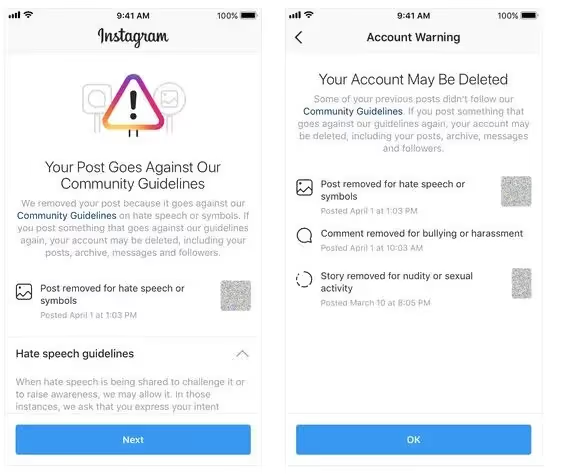
Some other notable features of Phyllo’s Brand Safety API include seamless integration with major social media platforms, customizability for brand blacklists, real-time infarction alerts, and detailed risk analysis reporting, etc.
Implementing the Brand Safety API from Phyllo is super easy—all you need to do is to acknowledge your brand’s persona (including the keywords, topics, content, and images you want to blacklist or whitelist), integrate the API with your advertising platforms, customize your safety parameters, and A/B test the API.
Phyllo’s API ensures security, uses advanced analytics to identify trends and patterns for ad optimization, and tracks KPIs effortlessly for each version so that you can refine the API settings with each iteration.

Final Thoughts
Ensuring brand safety is becoming infinitely harder as the volume of content on the internet keeps expanding. However, using the Brand Safety API from Phyllo can reduce the risk of off-brand, non-compliant, offensive, or inappropriate content.
You can also attract valuable influencers and media partners for collaboration, avoid PR disasters, and maintain GARM (Global Alliance for Responsible Media) compliance using this tool. Schedule a call with us to check out the features of this revolutionary API today!
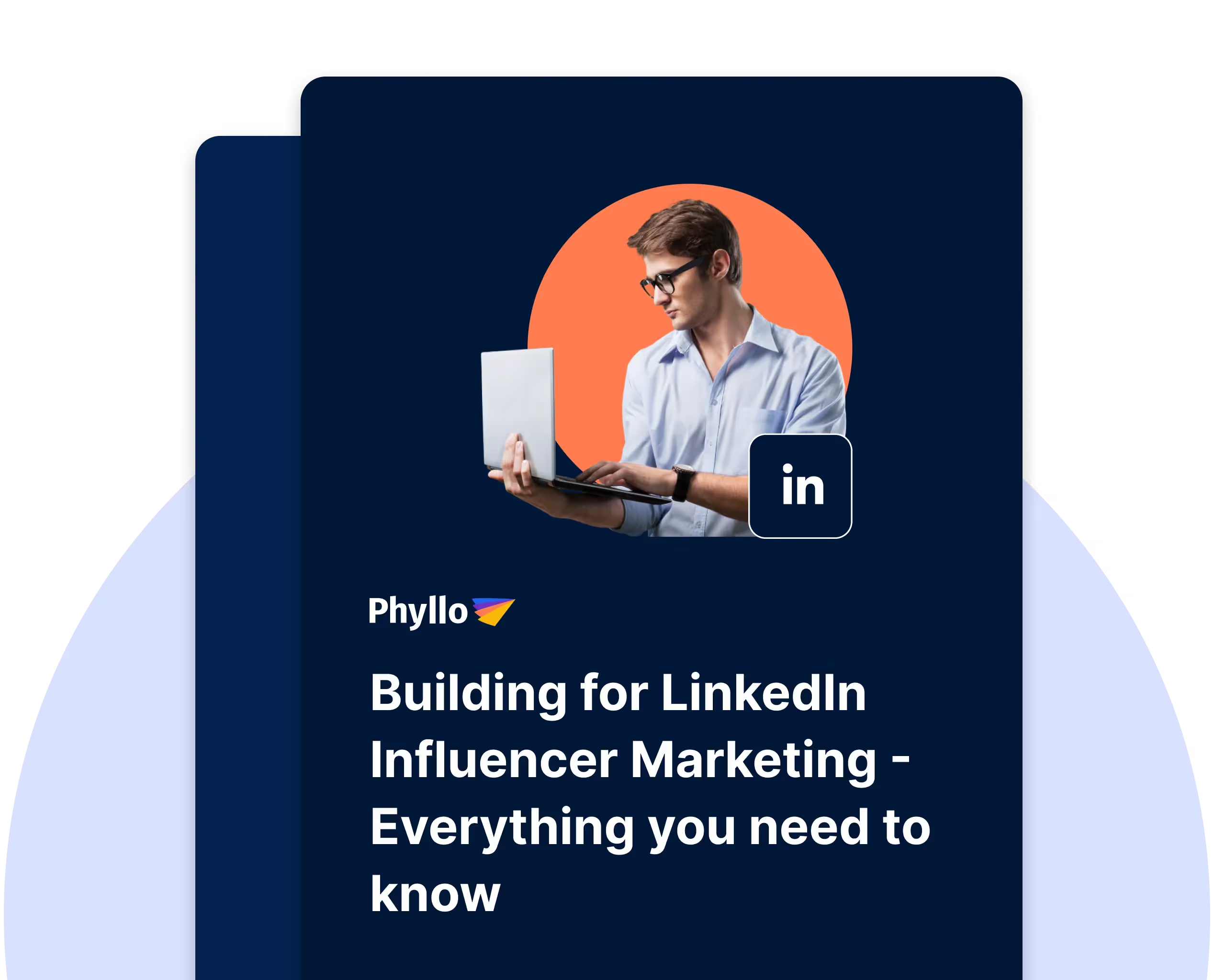

.avif)







